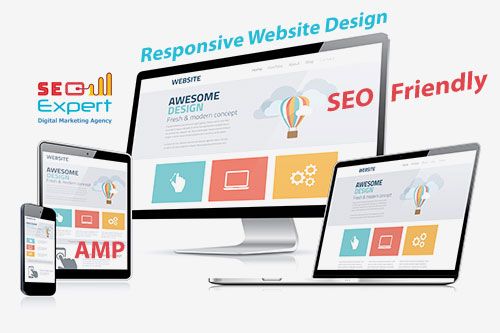Find Out Just How Web Layout Functions to Produce Engaging User Experiences
Web style plays a crucial duty fit customer experiences across electronic platforms. By recognizing essential principles like usability and visual pecking order, designers can create websites that not only attract visitors yet additionally motivate them to involve. Efficient layouts and well-thought-out color design can significantly influence individual habits. However, there are deeper factors to consider that surpass looks, which are important for promoting a comprehensive on-line setting. What are these components that can change an easy internet site right into an engaging experience?
Comprehending the Principles of Website Design
The foundation of effective web style relaxes on a set of core concepts that assist the development of involving individual experiences. These concepts include use, ease of access, and aesthetic pecking order, each playing a vital duty in exactly how individuals communicate with a website. Functionality ensures that users can browse intuitively, discovering info effortlessly. Ease of access expands the reach of a site, accommodating individuals with diverse needs and capacities. Visual power structure directs individuals' attention to key aspects, facilitating simpler understanding of content. Furthermore, uniformity in style elements promotes experience, boosting customer comfort. Color design and typography need to complement the overall aesthetic while keeping readability. Responsive design adapts to different gadgets, ensuring a seamless experience across platforms. By adhering to these concepts, designers create sites that not only captivate individuals however additionally assist them towards preferred actions, eventually boosting involvement and complete satisfaction.
The Relevance of Design in User Experience
Effective design functions as a backbone for customer experience, affecting exactly how visitors regard and interact with a website. A well-structured design guides customers' interest, making it much easier for them to navigate and discover pertinent details. By organizing content realistically, developers can produce a seamless flow that decreases cognitive tons, allowing customers to concentrate on their tasks.

Responsive layouts assure that web sites function well across different tools, maintaining usability regardless of screen dimension. Inevitably, a thoughtful format is important in developing an engaging individual experience that promotes satisfaction, urges expedition, and increases the possibility of conversions. Attention to layout style is important for effective internet communications and general user involvement.
Shade Schemes and Their Influence On Engagement
Exactly how do color pattern influence individual involvement on internet sites? Color pattern play a vital duty fit user understanding and actions. They stimulate emotions and can greatly affect how users communicate with a site. Warm shades like red and orange can stimulate excitement and seriousness, while cooler tones like blue and eco-friendly usually share calmness and trust. - Web Designer Kelowna
Uniformity in color usage fosters brand name acknowledgment, making individuals extra most likely to engage with acquainted visuals. Reliable color contrast enhances readability, ensuring users can quickly navigate material without pressure. Additionally, the mental organizations of colors can direct customers toward preferred actions, such as clicking a call-to-action switch.
Inevitably, an attentively chosen color design can not only draw in individuals but additionally boost their overall experience, causing greater interaction prices and boosted satisfaction. For this reason, internet developers must carefully think about shade options to optimize user interaction and foster a positive atmosphere.
Navigating Ideal Practices for User-Friendly Internet Site
What makes navigation user-friendly and straightforward on an internet site? Effective navigation depends on clear framework and rational pecking order. Users should easily situate food selections, generally positioned at the top or side of the web page, enabling fast accessibility to essential sections. Consistency in layout aspects-- such as fonts, shades, and button designs-- promotes experience, improving individual comfort. Detailed labels for navigating links are vital; they should properly represent the web content customers can anticipate when clicked.
Additionally, sites including a search attribute can help users in locating certain info swiftly. Dropdown food selections can arrange subcategories without frustrating visitors, while breadcrumb trails aid individuals track their area within the website. Mobile optimization is also critical, as touch user interfaces necessitate larger buttons and responsive styles. Eventually, prioritizing simpleness and quality in navigating allows customers to engage better with the site, cultivating a favorable customer experience.
Guaranteeing Accessibility for All Individuals
Guaranteeing access for all users is important in website design, as around 15% of the global population deals with some form of impairment. Internet developers should prioritize inclusivity by sticking to developed guidelines like the Internet Web Content her explanation Ease Of Access Guidelines (WCAG) These standards give vital requirements that enhance functionality for people with aesthetic, auditory, electric motor, and cognitive impairments.
Key practices consist of using descriptive alt text for images, ensuring adequate color contrast, and offering keyboard navigability. Furthermore, applying screen visitor compatibility can significantly enhance the experience for visually impaired users.
Evaluating web sites with diverse customer teams, consisting of those with disabilities, can disclose potential obstacles and inform required modifications. Educating layout teams concerning availability can cultivate a society of inclusivity, ultimately producing a much more user-friendly and appealing web experience. By prioritizing ease of access, developers not just increase their target market however also show social duty and dedication to equal accessibility for all.
Often Asked Inquiries
What Devices Can I Make Use Of to Design My Site?
To develop an internet site, one can make use of devices like Adobe XD, Figma, Sketch, and WordPress. These systems supply numerous functions for design, prototyping, and content management, assisting in the development of useful and visually attractive sites.
How Can I Examine My Internet site's Individual Experience?
To evaluate a site's customer experience, one can use tools like Google Analytics for actions tracking, conduct use testing with actual individuals, and gather comments via surveys to determine areas for improvement and boost overall involvement.
What Are Typical Mistakes in Internet Design to Prevent?
Usual errors in internet style consist of chaotic formats, inadequate navigation, lack of mobile optimization, slow-moving loading times, and using too several font styles or colors. These issues can prevent individual experience and reduce general website effectiveness.
Exactly how Typically Should I Update My Website's Layout?
An internet site's design should be updated each to three years, or much more regularly if significant trends emerge or user wikipedia reference feedback indicates dissatisfaction. Regular updates boost aesthetics and performance, guaranteeing a engaging and fresh customer experience.
Can I Learn Website Design Without Coding Expertise?
Yes, one can discover internet style without coding expertise. Different tools and platforms permit customers to develop visually attractive websites via drag-and-drop interfaces, enabling imagination without the intricacies of programming languages.
